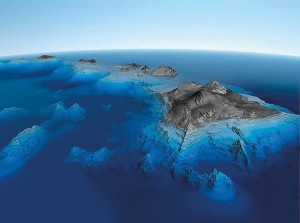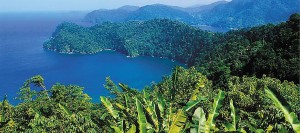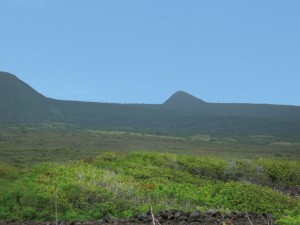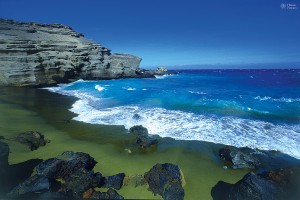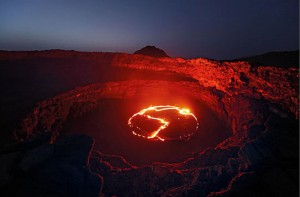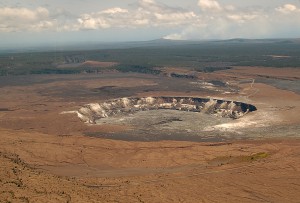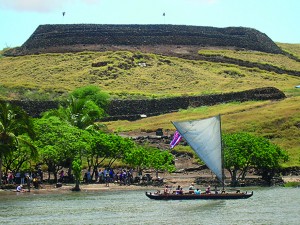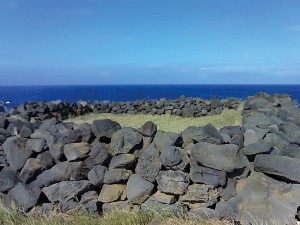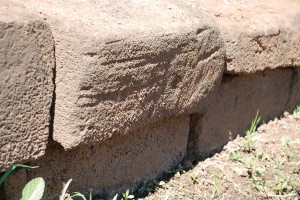KA LEA (Hawaii, USA)
4.2 Power place
Names
Hawaii, Aloha State
Hawaiki
That is the real origin of the name Hawaii and means “a small place for the survival of the knowledge of the breath of life”.
Geomancy
The tremendous diversity has been described with the eleven climate zones and five vegetation zones, as well as the visible and perceptible creative and loving energies, which can scarcely be expressed. The region is defined by the ocean, the volcanic mountains and the processes of creation.
Besides South Point, the western Mauna Kea volcano with its Pele crater is probably the purest and most powerful place. The active volcano is sacred to the native people and there are three beautiful legends handed down from the Kahuna ancestors about the signs which are given to people there by Mother Earth Pele.
The first occurs when the rising sulfurous plumes join together and form a circle, an effect caused by the caldera‘s thermal updraft.
The second occurs when a rainbow, the emblem of Hawaii, appears above the crater. The third occurs when a white animal appears and brings a message to the people. The most common of these are birds, fish or turtles.
When I was there in 2006 with my friend and translator, Michael Brewer; Pila, an American Kahuna; and two other companions, after a Huna ceremony, we were able to see all three signs: first, the plumes joined to a circle; then it started to drizzle and a beautiful rainbow appeared above the caldera; and afterwards a white bird, which looked like a swallow, circled the crater. We were deeply touched and full of love for this place.
So Hawaii deeply impressed and touched me with its lightness, geology, geomancy, vegetation and South Sea glory.
Power point
South Point, which is the southern tip of the largest and southernmost island, is the actual place of power and intersection of the energy grids.
The nearby Green Sand, Red Sand, White Sand and Black Sand beaches are strongly linked around this center and form an energetic realm.
Equivalence: heart chakra, love
Color: dark green, emerald
Dominating elements: fire & water
Corresponding place: Isabela, Galapagos
4.3 Structures
Main structures
So far, no megalithic buildings have come to light or been documented, although it is also said – as with Shasta – that the ancient buildings have been covered by flowing lava over the millennia.
The largest blocks of stone are found on the island of Kaua‘i in the so-called “Menehune Ditch”. The partly polygonal wall construction is reminiscent of the architecture of the megalithic plinth in Rapa Nui (see page 368).
Subterranean structures
There is no evidence of subterranean structures, but here, too, legends tell of huge caves and subterranean areas of the old kingdom.
One legend tells of other beings living there, who are found nowhere else on Earth, the so-called “Menehune” (see page 208).
Temple structures
Legends say that there was a large ancient temple called “Zukue” between South Point and Mauna Kea, but it has not been discovered or documented.
Heiaus
In Hawaii, temples and places of prayer are called “Heiaus”. In times past, such stone platforms were built to honor the gods and to connect with them. These platforms are not graves, as they are often misrepresented to be. These old stone temples in Hawaii are considered to be holy, as “a connection to the past and a bridge to the future”. That is why they need to be fenced in so that outsiders cannot enter them. Some sites also have an external wall around the Heiau which serves as a boundary around an inner area which only the Kahuna priests and tribal leaders were allowed to enter.
Like the “Ahu” foundations in Rapa Nui, the Heiaus in Hawaii have been maintained and sometimes extended over thousands of years. At the Kane‘aki Heiau on the island of Oahu six construction phases have been documented, with an expansion from the original 400 to more than 1000 square meters.
Heiaus can be found throughout the South Pacific area, as we will see in Chapter 10: Ovalau/Fiji. On the other islands, they are usually called “Marae”.
The Kahunas and the religious native people believe the Heiaus to be holy places and sites left behind by their Huna forefathers, who in turn say that those who constructed these places were there long before them.
I believe the following to be the four most important Heiau temples on Big Island.
– Heiau O Kalalea (main power place)
– Heiau Mo‘okini
– Heiau Kamehameha Akai Aina Hanau
– Heiau Pu‘ukohola
4. KA LAE, Hawaii (USA)
4.1 Landscape 193
– Geography 193
– Geology 194
– Climate 196
– Vegetation 197
4.2 Place of power 198
– Names 198
– Geomancy 198
– Power point 199
4.3 Structures 200
– Main structures 200
– Subterranean complexes 200
– Temple structures 200
– Original purpose 203
– Other structures in the region 203
4.4 History 204
– Historical history 204
– Finds 206
– Prehistoric history 208
– Builders and peoples 208
– Legends and myths 211
4.5 Spirit 212
– Religions and deities 212
– Spirituality and transmissions 216

